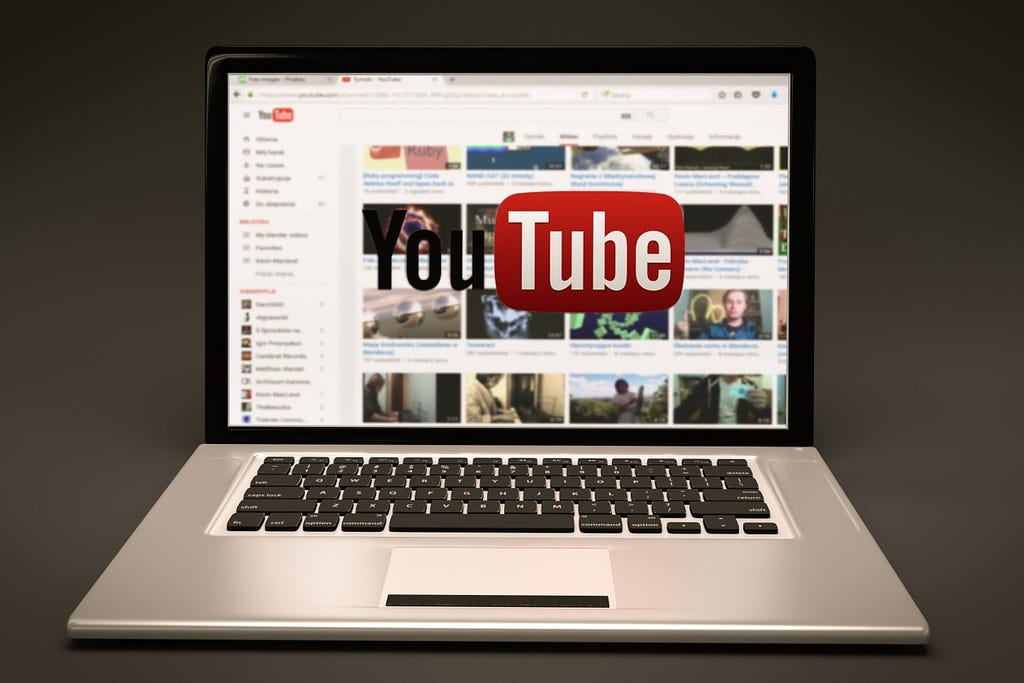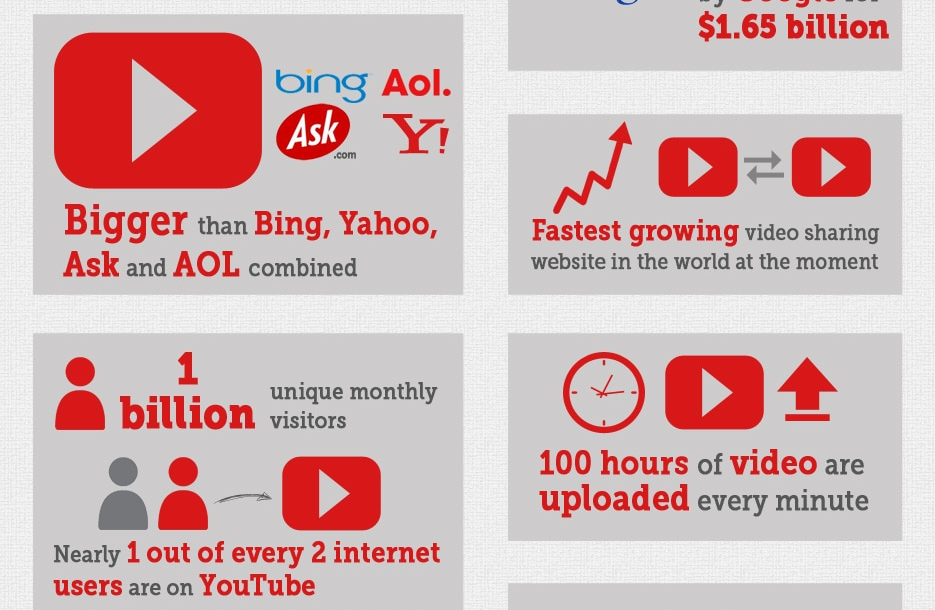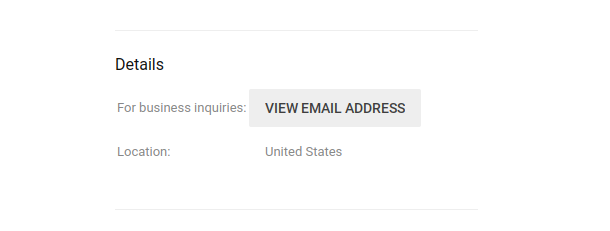
Any affiliate rep that helps bring in sales is a great partner to have, but Influencers can definitely make a big difference in both conversions and brand exposure. We’ve written about Influencer Marketing a bunch previously, including our guides to Instagram and Facebook, but we haven’t tackled one of the most popular platforms to find and work with them: YouTube.
If your business has stayed away from YouTube because you think it’s mostly cat videos and videos of cats, you may be surprised to learn that YouTube is the 2nd most used “search engine” after Google.
 Bigger than Bing and Yahoo combined!
Bigger than Bing and Yahoo combined!
These days, consumers frequent YouTube to find news and reviews of products; and this platform is ripe with Influencers who truly move the tides of shopping trends.
Why work with YouTube Influencers?
There are many reasons you should consider finding a YouTube influencer in your niche to run affiliate marketing campaigns with.
Reach
The reach of YouTube Influencers is unique in the social media landscape, because videos on the platform are pushed to both the creator’s subscription base and for non-subscribers who perform searches. Sure Twitter and Instagram can do this too, but a) people search on YouTube much more than on these platforms, b) viewers of video are usually more active participants because clicking “play” and watching something for 8+ minutes is much more involved than passively scrolling through a feed.
So not only do Influencers on YouTube maintain thousands to millions of direct subscribers, the quality of their reach is better. That’s why YouTube is consistently at the top of where people spend their time on social media.
Mediakix calculated average time spent per day on YouTube (40 minutes), Facebook (35), Snapchat (25), Instagram (15) and Twitter (one) and projected those figures out over a lifetime, arriving at a total of five years and four months.
Loyalty & Trust
Check out this stat from Think With Google:

YouTube Influencers are (in general) more down-to-earth, personal & personable, and evoke loyalty to the subscribers. Basically, there’s a difference between Matthew McConaughey hawking a car, and a personality on YouTube whose entire channel has been dedicated to reviewing cars. The latter conveys expertise which translates to trust.
These Influencers have cultivated an opt-in audience who often make buying decisions off their recommendations. That’s never more obvious than in the hugely popular makeup tutorial videos that have made some Influencers into millionaires. But only because brands have effectively leveraged their influence into profits.
Longevity
An overlooked benefit of YouTube: these videos usually last forever. It’s rare for creators to take down a video. It behooves them to have as much content on their channel as possible. This is a great benefit for brands that work with Influencers to get a mention in the videos; for a one-time fee, that video will always be there for new viewers to find.
Consider a traditional TV or radio spot. They run for a week or a month, then vanish. On YouTube, these sponsorships can keep paying dividends long after the video premieres.
Cost effective
Yes, there are YouTube Influencers with millions of followers who can command giant paychecks. But as we’ve said before, micro-Influencers are one of the most cost-effective affiliate partners out there. They might only have a few thousand subscriptions on their channel, but their audience is loyal and has expressed direct interest in this niche. It can be a bargain to work with a dozen of these micro-Influencers, rather than with one big Influencer.
Cred
Not only can an Influencer transfer trust by mentioning your brand, but a certain “street cred” as well. Especially for smaller businesses, it can be hard to a) craft a personality/voice that resonates with today’s shoppers; and b) crack “video advertising” in a friendly, not overly-corporate way.
This is the beauty of allowing a YouTube creator to produce a video around your brand. Their audience already thinks they’re cool, and they’ll feel that way about your product or service as well. And the creator already knows what type of content their audience enjoys (ie. would be willing to watch to the end), and can suddenly give your company a sort of “voice” on a social media platform that’s crowded.
So, now that we know we want to work with a YouTube personality, how do we get started?
Do your research.
Sorry, but you knew it was coming. Finding the right Influencer takes some effort and vetting. The last thing you want is to do damage to your brand by working with the wrong spokesperson.
Who are the Influencers in your niche?
Answering this can be as simple as performing searches on your keywords and seeing what videos/channels come up. Watch all of them. Or at least as many as you can. Who has the personality that would work well with your brand? Which Influencers seem to have enough subscribers to be worth it? What’s their like to dislike ratio on their videos? What sort of positive or negative comments are their viewers leaving?
It’s time-consuming to watch all these videos, but it can also be fun to see what sort of content these creators have produced in your niche. You might also get a sense of the type of tone, production quality, video length, and message you’d want in your own Influencer videos.
And if you want to save a bit of time, there are many Influencer aggregator websites that can help connect you with the right person. Channel Pages can help you view demographic information by channel. And sites like SocialBlueBook and Scrunch are directories of Influencers you can search (for a fee).
Some tips to keep in mind as you search for your first YouTube Influencer:
- What’s their “ratings level”? Is their content PG? R? NC-17? Watch many of their old videos to see if their level of irreverence can mesh with your brand.
- Start small. Find an Influencer in your niche with just a few thousand subscribers. They won’t ask for much money, and it can be a way to test the waters without breaking the bank.
- Think tangential interests. It’s possible you’re in a very popular market with very big, expensive Influencers. What are some tangential interests off your niche that could work well for a different Influencer? If you sell camping gear, how about the growing community of van-dwelling YouTubers? Different keywords, same needs. Think a bit outside your niche to find untapped Influencers to work with.
Reaching out to YouTube Influencers.
One great thing about YouTubers who are looking to work with brands, they make it really easy to contact them:

Recommended for You
Webcast, October 30th: What is Post-Click Optimization & Why is it Critical for Marketers?
Just head to their About page, and any channel with aspirations of making money off their content (read: nearly all of them) will have an email listed.
Here’s a sample email to send that will elicit a response:
Hi _________,
Just wanted to say that your latest video on Influencer Marketing was really insightful. We especially loved the point you made about monthly communication and affiliate newsletters.
As a short intro, we are the #1 [Your Niche] . We’re looking to work with an Influencer with great content such as yours to reach an audience who might be interested in trying our software. We’ve got a marketing budget slotted for this, and we wanted to see if you’d be interested in working with us.
Looking forward to connecting!
[email & phone]
Some points in that email to highlight:
- Show that you’re familiar with their content by using specifics.
- Make sure you’re subscribed to their channel!
- Intro your company with some credentials. You’re not a random brand. You’ve got some wins under your belt already.
- Keep it short. Don’t bury the fact that you’re asking for a business partnership.
- Mention that there is money. Don’t mention how much money.
This approach should suffice for the vast majority of Influencers you find. If some are bigger than usual, you might have to go through their agent or manager. If they don’t have an email listed, you can connect with them via a Direct Message on YouTube (or one of their other social channels), or even a comment on a video.
Also, for larger Influencers, you could send a gift package of your physical products to their PO box (which they often also have listed). It can be a great way to introduce your brand, and open a friendly channel of communication to discuss an ongoing partnership.
Compensation.
Now that you’ve made first contact, let’s talk compensation for their services. There are three major ways to go:
Flat rate — For most smaller channels, getting paid for creating content will probably be a new and exciting thing for them. They’ll be more open to a flat rate for a video or a series of videos involving your brand. On the low end, $300 to $500 can serve for a video. Mid-range, $1000 to $5000 for a video as well as supplemental services (Tweeting about it, posting to their Facebook and Instagram, etc). And of course, the sky’s the limit depending on your deep pockets and how famous the Influencer is.
Commission — Next best is the true affiliate model of offering them a percentage on every sale they bring in. Start your negotiation with the general rate you use for all your affiliates, but be prepared to go higher depending on how savvy they might be. Also, it might be hard to sway Influencers without at least a “signing bonus” of a guaranteed chunk of cash up front. Saying “15% commission” is not as enthralling to Millennials as “$500 for a video.” It’s common to do a combination of a fee + commissions when working with YouTubers.
Freebies — Especially if they are already fans of your brand, many Influencers will work for free samples. Make the clothes they already wear? Gift them a pile of your latest line and have them review each one.
Of course, to make sure this marketing channel is actually returning a profit, be sure to track your metrics. Luckily, it’s easy to do with a unique affiliate link or a coupon code. Offer a % off (to the audience) for using the link and track how many conversions result. Also, don’t disregard the brand-awareness lift you can experience from a YouTube video. Keep an eye on any surge in traffic to your site the week the video premieres.
Working with YouTube Influencers.
You’ve found them. You’ve hashed out a deal. Now, what are the best practices for working with YouTube Influencers?
Let them create.
A quick way to kill the relationship is to give them too many rules & restrictions on creating their content. Remember, they’re creatives in every sense of that word; and you should have done your homework to know that they already have a voice that fits with your brand.
Give them light guidelines: features to mention, the promotion you’re running, etc; but mostly leave them alone to do what they do. They know their audience better than you do. They know what their subscribers want to see. The whole point of working with an Influencer is to borrow their expertise in this area. Let them pitch you some video ideas, just so you’re on the same page, and trust them to create something great.
Don’t anger the FTC.
One quick way to get a video pulled off YouTube, and worse, lose the trust of the audience, is to hide that it’s a paid ad. The FTC has guidelines on what to disclose in these videos, and YouTube even has options to mark video uploads as “containing paid sponsorship” to make it extra clear to the audience.
Newbie YouTubers might not realize this, so you should understand what the FTC requirements are so everything remains above board.
Clear deadlines.
One of the major frustrations we hear about with merchants working with Influencers is that the creators drag their feet sometimes. Nip this in the bud by laying out clear deadlines for when the video must be submitted (for approval) and published. This is especially important if you want to coincide a video with a promotion you’re running.
And having deadlines will help motivate your partners to create as well. It lights a fire to get the video done. Just make the timeframe reasonable. Creating a good video takes time, so the more lead time the better.
Take risks. Have fun.
If any platform gives you the leeway to do something a bit off-the-wall, it’s YouTube. It’s common for a brand to give an Influencer a handful of cash to do whatever they want to promote the brand. You’ve seen the wacky stuff that goes viral. Don’t be afraid to push your brand’s identity a bit. It’s a safe space to be funny, and you’re relying on the Influencer’s brand of humor anyway in this partnership. You might be surprised at the results.
Have you worked with YouTube Influencers? What was your experience?